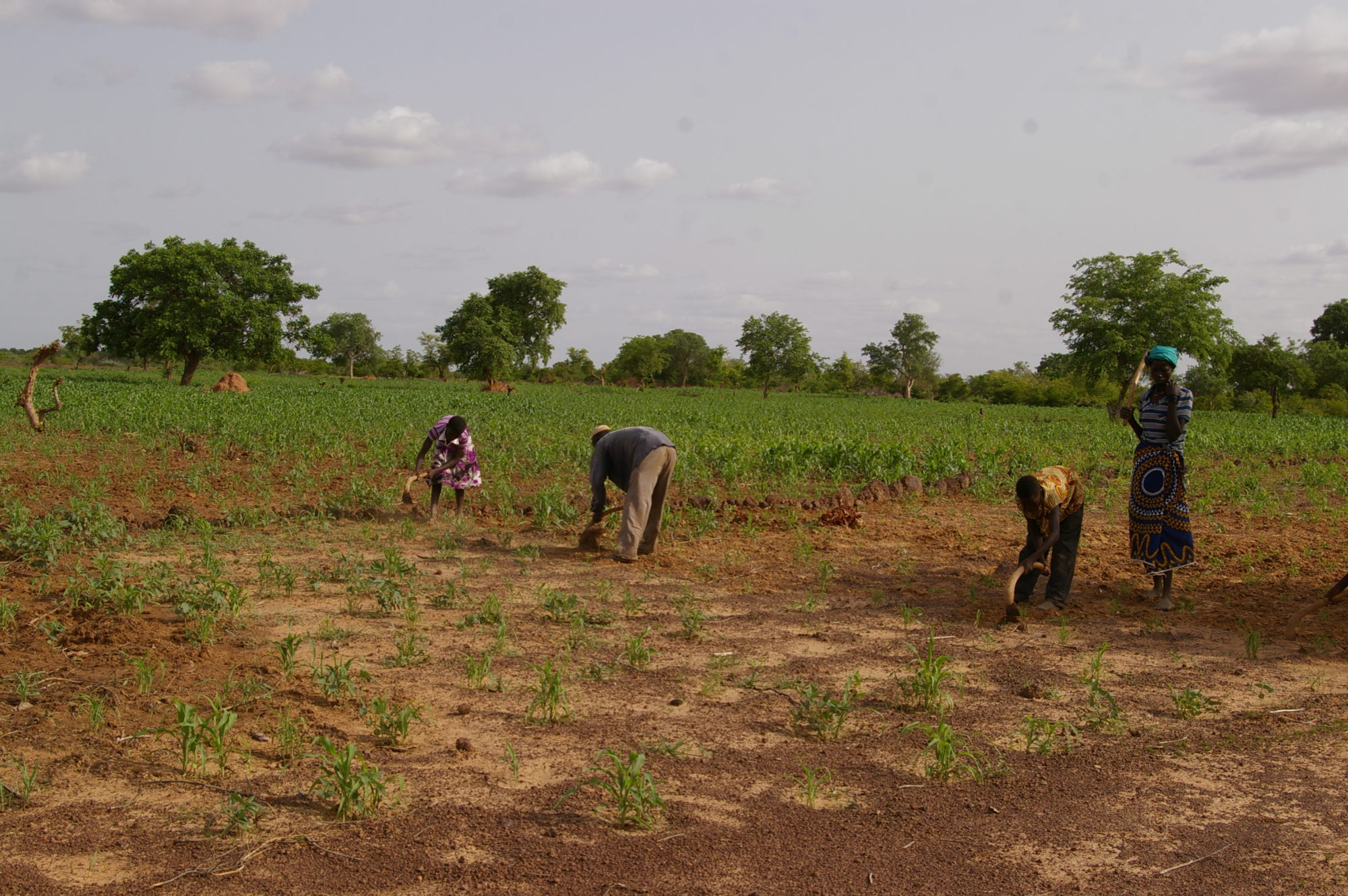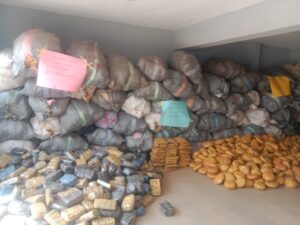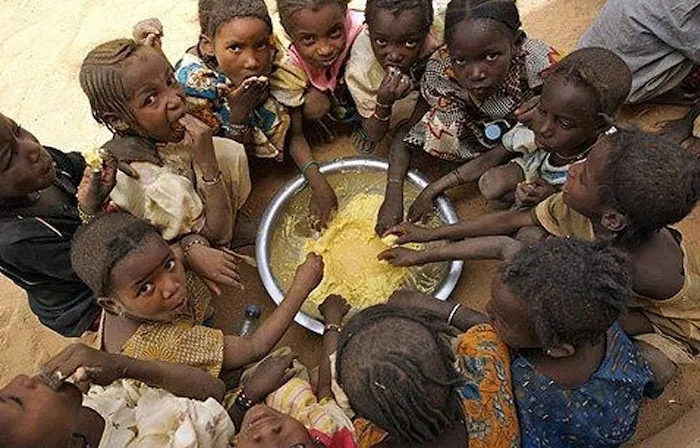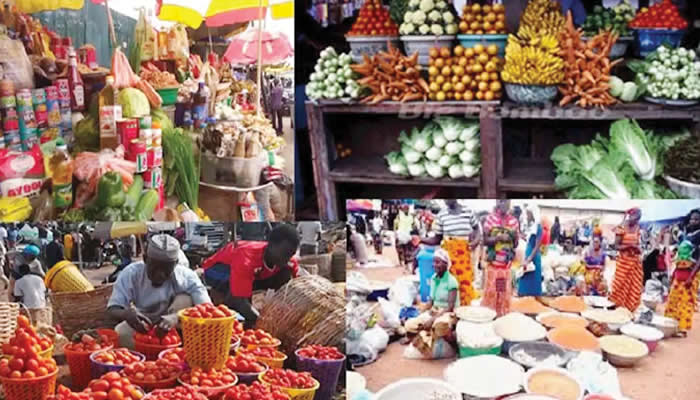Africa
THE FUTURE OF WEST AFRICAN AGRICULTURE

By Ernest Ogezi
Introduction
The West African region comprises 16 countries and has a projected population of about 422.8 million people in 2022 (Worldometer, 2022). The region covers 5,112,903 square km of land. The total domestic primary crop and livestock production in West Africa in 2020 was about 412 million metric tonnes, well over half the total primary crop and livestock production in the USA – 689.9 million metric tonnes (FAOSTAT, 2020). Nigeria is the dominant economic force in the region and the growth or contraction of its economy has significant impact on the region. The region is a net importer of food and agricultural products despite huge potentials for food security and self-sufficiency.
Global importance of the region
This segment focuses on the agricultural importance of the West African subregion through the crops the region has comparative advantage in. The region leads the world in Yam, Cassava, Fonio, Cocoa, Camel milk and Sheanut. It also has significant production capabilities in okra, Millet, Sweet potato and Sesame.
The region is the highest producer of most of the popular tubers in the world. Nigeria, Ghana and Ivory Coast produce nearly all of the yam in the world. Nigeria is the highest producer of Yam in the World, producing about 45.4 million metric tonnes of the total 67.9 million metric tonnes. The Yam belt of the world is in West Africa as Bénin, Côte d’Ivoire, Ghana, Nigeria and Togo account for about 95% of the world’s total yam production making it the most important region.
The region is also a global power house in Fonio production as just Guinea, Nigeria and Mali account for 93.71% of Fonio production in the world. Guinea produces over 0.5 million metric tonnes (76.5%) of the total fonio in the world. Nigeria produces about one fifth of the world’s total cassava (19.8%), the highest by a single country. The country produced 54.4 million metric tonnes of the total 274.6 million metric tonnes produced in the world as per FAOSTAT data of 2020. The region registers a significant production of both ginger and okra as Nigeria is second in global production to India in both cases. Mali completes the top 3 in okra production. Niger is second highest producer of millet in the world as is Ivory Coast the second highest producer of cashew nuts in the world after India. Nigeria is in the top 4 highest producers of sweet potato and in the top 5 highest producers of sesame in the world. Camel milk production features Mali in the top 3 highest producing states, and is an all African affair except for Saudi Arabia coming in the fifth position.
Sheanut is predominantly produced in West Africa; the leading producer is Nigeria while Mali and Burkina Faso complete the top three in that order. Cocoa also shows a West African dominance. Ivory Coast is the World leader followed by Ghana, Indonesia comes third before Nigeria, and Ecuador closes the top 5. Nigeria is second only to the United States in sorghum production. Nigeria is also in the top five producers of pulses in the world. Despite the fact that its potentials are largely underexploited, the West African region is one of the most important agricultural regions of the world. The region producers some unique and important crops that are becoming more and more important all over the world as staples. West Africa is the fastest growing region in Africa both demographically and economically, and one of the fastest in the world (http://www.west-africa-brief.org/content/en/uemoa-economies-are-projected-grow-66-2020).
Source: Data extrapolated from FAOSTAT
Trends in West Africa
Trends in West African agriculture over the past decade does not show one direction but a number of production fluctuations. Cash crops showed unexpected dips and increases over the last decade and are expected to experience a -3% decrease in the current season. Industrial crops show significant increases in the current season projections (29%). Consumer expenditure will reach $2.5 trillion by 2030, growing at a compound annual rate of 3.9%. Policy trends that will influence Africa include the Malabo declaration and the African Continental Free Trade Area (AfCFTA)
The year average of cereal production in West Africa was 71 million metric tonnes in the period between 2016/17 and 2020/21. Current cereal production (2021/22) is expected to rise to 73.3 million metric tonnes in the region. Over the same five-year period (2016/17 to 2020/21), production of the five major tubers (yam, cassava, sweet potato, Irish potato, and cocoyam) was an average of 180.6 million metric tonnes. The 2021/22 is forecasted at 202.9 million metric tonnes. Cash crops (groundnut, cotton seed, cowpeas, sesame, soybean and Bambara bean) are extrapolated to a shortfall between the five-year average (by –3%), from 0.189 million metric tonnes to 0.183 million metric tonnes in the current year expectation. It also means a – 23% decrease from the production of the previous years (FEWS NET, 2021).
Six selected industrial crops also show significant production increase in the current production cycle (2021/22) over the five-year period (2016/17 to 2020/21). The crops are cocoa, coffee, Hevea (rubber tree), cashew nut, oil palm tree and plantain. The current projected production is 14.5 million metric tonnes (2021/22). This is 29% higher than the five-year average that stood at only 10.3 million metric tonnes. Total cereal production in the region over the 6-year period of 2016 – 2021 (2021 estimated) stood at 72.15 million metric tonnes (FAO, 2022). Extrapolated data from FAOSTAT shows that the West African region has produced over 3.72 billion metric tonnes in the decade between 2011 and 2020.
The Malabo declaration of 2014 is an important trend in West African, and African, agriculture. This is the recommitment of African leaders to the 2003 Comprehensive Africa Agriculture Development Programme (CAADP) greater investment and improved productivity in the agriculture sector. The GDP of the region grew by average 4.95% from 2010 – 2018 which is higher than the world average of 3.15%; nonetheless, average GDP growth rate of 5.7 before the declaration (2010–2015) and a growth rate of 4.2 after the declaration did not show significant impact of the declaration on economic growth, although several underlying factors exist (Nwafor et al., 2020). In the same period Nigeria clearly remained the biggest spender in total expenditure terms but was still among the countries with decreased expenditure on agriculture with a marked dip between 2015 and 2018, along with Gambia and Ghana.
Ghana, Guinea and Nigeria recorded the largest per capita expenditure decreases in agriculture. The biggest increases were Liberia, Gambia and Benin. This is despite the fact that the real volume of Nigerian expenditure was three times the size of the country next to it (Senegal). The country’s low per capita expenditure is largely due to its massive population but a decrease in general volume has also occurred. The effect of Nigeria’s rise or fall in GDP affects the regions GDP as well because Nigeria holds a third of the region’s GDP (Nwafor et al., 2020).
The African Continental Free Trade Area (AfCFTA), which came into existence on the 1st of January, 2021 is a major trend that will change the shape of trade in the whole of Africa. This trend seeks to improve the intra-African trade profile of just 2%. But the real consequences of COVID-19 on food supply chains and trade have made the region come to the realization of the need for regional self-sufficiency in food. A World Bank report predicted a decline in economic growth in West Africa between -2.1 and -5.1 in 2020, and true to this prediction a decline of -3.3 occurred (Zeng, 2020). Other new trends include the renewed desire of West African countries for manufacturing independence. Most of it was revived by the pandemic. This will see redirection of imports and ensure that a viable indigenous economy is developed for most West African nations.
Consumer expenditure was $1.4 trillion in 2015 and is expected to reach $2.1 trillion by 2025, and $2.5 trillion by 2030, growing at a compound annual rate of 3.9% (Signé and Johnson, 2018). This means that there is a consistent and significant increase in consumer expenditure among Africans. It is not different for the overall West African states. An extrapolated USD 190 billion has been spent by West African countries on imports between 2010 and 2020. The major importing countries in West Africa are Nigeria, Ghana, Cote d’Ivoire, The Gambia and Senegal (USDA, 2019) Guinea Bissau, Cape Verde and Sierra Leone are at the bottom of imports.
New policy trends have characterized the African agriculture space over the last decade further intensified by the realities that followed the COVID-19 pandemic. Trends such as AfCFTA and the Malabo declaration along with other country-specific indigenisation policies will attempt to create a balance between imports and exports as well as ensuring that more trade traffic is achieved within the region. The region already has sufficiency in coarse grains as a composite food group – the region already produces 44 million metric tonnes while the population requirement is 36.8 million metric tonnes. This figure cuts across the periods of 2016/17 to 2021/22. However, self-sufficiency in rice production is yet to be achieved and self-sufficiency in wheat is abysmal, the region produces less than 1% of the population requirement (FEWS NET, 2021).
Turning point in West Africa
The COVID-19 pandemic is a big turning point in West Africa. The bye-product of lessons from the pandemic is digital farming. Never has the region realized the need for digital farming more than now. Strong indigenisation policies within the sector will lead to lead to increased intra-regional trade and may cause self-sufficiency in the process.
The pandemic, again, has sped up the rate of digital technology adoption in agriculture in West Africa. Nigeria is a powerhouse here, and not just in West Africa but in the whole of Africa. Nigeria can pride itself as home to at least 7 unicorn companies – Opay, Flutterwave, Interswitch and Jumia, Andela, Airtel Africa, and Esusu. In 2021, Nigeria attracted a total of $1.65 billion in seed and series funding of the total $4.65 billion, more than a third (35.48%) of the African total (Oyekanmi, 2022). About 60% of the money attracted by start-ups went to tech start-ups. Even though only 4% went into agriculture, it is clear that digital agriculture will benefit from a charged digital ecosystem in West Africa.
The key turning points is West Africa are the COVID-19 pandemic, incorporation of digital technologies into agriculture and the emergence of region-first collaborative policies that will see the region begin to look inward to solve its problems. The pandemic’s negative impacts have awakened the need for localisation of trade, production and business interactions. Also, ubiquity of digital technologies in the system will occasion a more technological outlook to agriculture for the region. Different policies within the ECOWAS, and all of Africa, will strengthen both intra-regional trade and the financing of agricultural production at individual state levels. West African states have also witnessed the development of regional and national policies for the growth of agriculture in the region. A possible change of Nigeria’s economic policies may see the West African giant’s economic woes altered by the change of government of 2023.
The future of West African Agriculture
Aggregation of resources will be observed in the region. This will help solve sociocultural hindrances in the region. Incorporation of digital agriculture will be predominant in the region as well. A deviation from a subsistence-based to commercial-based agriculture will be observed, so will industrialisation and better processing. Major constraints in the future of West African agriculture include climate change, poor funding, infrastructural deficits, policy confusions and lack of inclusion of digital technology in existing agricultural policies.
The future of agriculture in West Africa will be characterised by the aggregation of resources such as land and the intensification of high energy inputs and better technology. The region will witness greater inclusion of more advance agricultural techniques and technologies. This should lead to per capita yield increases and better levels of resource use optimisation. The development of technology-based agriculture will become more predominant in the West African space.
Clear targets of increased crop and livestock production and efforts to achieve these targets will be seen in the near future. This will be achieved through the incorporation of technology and the employment of the region’s vast youth population. Sub-Saharan Africa has the largest area of uncultivated arable land in all the world and has the most youthful population in the world, the goal of the West African region is doubling or even tripling its agricultural productivity by maximising the potentials of its vast youth population; such increased productivity will extricate 400 million people from extreme poverty and improve the livelihood of 250 million smallholder farmers and pastoralists in the region (FAO and ITU, 2022). Access to land and key resources by young people for farming in West Africa will essentially engender an agricultural revolutionization that will lead to geometric increases in productivity.
Sub-Saharan Africa’s agriculture must move from a subsistence-based agriculture to a more commercially inclined agriculture if it must meet the needs of fast-growing population. The region has already witnessed the emergence of several agriculture-based tech start-ups and will continue to see more. There will be greater incentive for the improved productivity once the region institutes a region-first policy for agriculture products marketing. Policy will be a game changer in West Africa’s agricultural future more than anything. The ability of the region to research on its strengths and strengthen its weaknesses will be a huge game changer since the region has great self-sufficiency as a composite entity than as stand-alone entities that it currently operates. The future will see greater collaborations for meeting agricultural needs.
Growth in industrialisation and agri-processing will be encouraged and witnessed by most West African states. Advances in the knowledge of science and technology will birth the development of more sophisticated agricultural value chains that employ specific advance skills that are needed for the production of goods and services that suit more refined consumerist demands and tastes. Manufacturing the more refined products that Africa’s growing middle class will demand will further ensure that importations are minimized and kept within the region.
Funding for these projects will pose a major constraint as West African governments do not seem to take the initiative quickly enough. The growth of agriculture will depend a lot on the changes that governments make in their policies and intervention programmes. For instance, digital agriculture is scarcely included or aligned with in the existing agricultural policy plans for West African nations but the development of digital agriculture and the fact that the population of the region is highly youthful make digitalization the most important policy direction of the region; the growth of agriculture in the near future should not focus merely on the improvement of productivity through digital technology alternatives but digitalization should encompass the entire value chain of agriculture in the region (FAO and UTI, 2022).
Some other constraints to digitalization of agriculture in West Africa include providing the needed business environment for the growth of digitalization. This involves policies and frameworks that enable the growth of digital agriculture in the region. Improvement in broadband penetration and mobile internet access are important to digital agriculture development in the region. Trade hindrances also need to be removed to make the region’s intraregional trade a reality, the region suffers from conflicting trade policies, extraneous regulation that does not favour agricultural growth, inadequate investment in research and development, dilapidated road networks and poor transportation system as well as an absence of agribusiness with subsistence in its stead, hamper the development of product and marketing networks in the region and should be addressed.
Climate change will feature in no mean way in the future of agriculture in West Africa. Climate change is expected to cause a decrease in crop yield by 0–2% per decade in sub-Saharan Africa. West Africa has at least 19 climate change policies in 12 countries, Guinea lacks a climate change policy document while Senegal, Sierra Leone and Cape Verde do not have these documents in the public domain (Sorgho et al., 2020). The ability of the region to mitigate or even adapt to the effects of climate change will contribute to the improvement of its productivity in the future.
Case study
Cote D’Ivoire presents a special situation as it is dependent on its agricultural exports (up to 40%) and has a stable economy supported by stable food prices, low inflation rate and modest fuel price increase.
In all of this, the productivity prowess of Cote d’Ivoire in cocoa production is as extraordinary as it is exemplary. Cocoa makes up 40% of the country’s export and 38.2% of the world’s cocoa production. The characterisation of Ivory Coast’s export potential by agricultural products instead of natural resources, as is the case for most countries in West Africa, is exceptional. Although the monolithic dependence on Cocoa portends serious danger as a tiny fluctuation in global prices could mean that the livelihoods of millions of cocoa farmers in Cote d’Ivoire and a general dip in the economy of the country. The economy of Cote d’Ivoire is very stable and about the best in the continent showing that there is a perfect balance between its economic resources and the economic policies of the country. Inflation is expected to be pegged at 0.3% standing on the foundation of stable food prices, moderate fuel prices, and lower cost of telecommunications. There is a balance Cote d’Ivoire has been able to strike with its main export, its economic policies and its fiscal regime (https://www.worldbank.org/en/country/cotedivoire/publication/cote-divoire-economic-outlook-why-the-time-has-come-to-produce-cocoa-in-a-responsible-manner).
REFERENCES
FAO and ITU. (2022). Status of digital agriculture in 47 sub-Saharan African countries. Rome. https://doi.org/10.4060/cb7943en
FAO. (2022). Crop Prospects and Food Situation – Quarterly Global Report No. 1, March 2022. Rome. https://doi.org/10.4060/cb8893en accessed July 22, 2022.
FAOSTAT (2020). https://www.fao.org/faostat/en/#data/QCL accessed July 18, 2022
FEWS NET (2021). WEST AFRICA: Regional Supply and Market Outlook. https://reliefweb.int/attachments/7bf3927a-6fed-3fb3-9dbd-6cb94fd43758/RSMO_WA_20211221.pdf accessed July 22, 2022.
Oyekanmi, S. (2022). Nigerian start-ups raise over $1.6 billion fundings in 2021. https://nairametrics.com/2022/02/07/nigerian-startups-raise-over-1-2-billion-fundings-in-2021/
Signé, L. and Johnson, C. (2018). Africa’s consumer market potential: Trends, drivers, opportunities, and strategies.
Sorgho, R., Quiñonez, C. A. M., Louis, V. R., Winkler, V,
Dambach, P., Sauerborn, R. and Horstick, O. (2020). Climate Change Policies in 16 West African Countries: A Systematic Review of Adaptation with a Focus on Agriculture, Food Security, and Nutrition. Int. J. Environ. Res. Public Health, 17: 8897.
USDA (2019). West Africa: Prospects for U.S. Exporters. https://www.fas.usda.gov/data/west-africa-prospects-us-exporters
Zeng, D. Z. (2020). How will COVID-19 impact Africa’s trade and market opportunities? https://blogs.worldbank.org/africacan/how-will-covid-19-impact-africas-trade-and-market-opportunities
Africa
When the Gatekeeper Fumbles: JAMB’s Error and the Future of Our Youth

When the Gatekeeper Fumbles: JAMB’s Error and the Future of Our Youth
By Matthew Eloyi
It is not every day that a public official publicly sheds tears. And so, when the Registrar of the Joint Admissions and Matriculation Board (JAMB), Professor Ishaq Oloyede, broke down while admitting to errors in the conduct of the 2025 Unified Tertiary Matriculation Examination (UTME), it was a deeply emotional moment. But make no mistake: while the tears may have reflected remorse, they cannot wash away the consequences of what is, quite frankly, a systemic failure.
Let us be clear — JAMB is not merely an examination body. It is a gatekeeper to higher education in Nigeria. It is the bridge between dreams and their realisation for millions of young Nigerians. To fumble that responsibility is not a technical error; it is a breach of trust with life-altering consequences.
With nearly 380,000 candidates now required to retake the exam due to technical glitches and irregularities, one cannot help but ask: How did we get here? And more importantly, why does this keep happening?
For years, JAMB has marketed its transition to computer-based testing as a step toward modernisation. Yet each year seems to expose new cracks in its implementation — from faulty computer systems and power outages to incomplete biometric verification and poorly configured questions. These are not unforeseeable anomalies. They are predictable outcomes of poor planning, lack of oversight, and inadequate investment in infrastructure.
Imagine the psychological toll on the students, many of whom studied day and night, only to be met with malfunctioning systems and flawed questions. Some walked out of examination halls in tears, their confidence shattered, their futures placed in limbo. For those in remote or under-resourced areas, the technical errors are compounded by infrastructural and economic disadvantages. What we are witnessing is not just an exam failure; it is an institutional failure that amplifies inequality.
JAMB’s decision to allow affected candidates a resit is necessary, but it is insufficient. What about those who may never realize they were victims of the glitch? What about those whose faith in the process has been irreparably broken?
Professor Oloyede’s tears may have been sincere, but what Nigerian students need now is not emotion — it is accountability. Heads must roll, systems must be overhauled, and the entire structure must be audited. We cannot allow a body that plays such a pivotal role in shaping the nation’s intellectual future to operate with such recklessness.
The UTME is a rite of passage for Nigerian students; it should not become a roulette of misfortune. Until JAMB can guarantee a glitch-free, fair, and standardised assessment, its credibility will remain on shaky ground.
In the end, our children deserve better. They deserve an education system that works; not one that breaks down and apologises after the damage is done.
Africa
ECOWAS Confirms Burkina Faso, Mali, Niger’s Exit, Keeps Doors Open for Return

The Economic Community of West African States (ECOWAS) has confirmed that the withdrawal of Burkina Faso, Mali, and Niger from the regional bloc takes effect from January 29, 2025.
ECOWAS spokesperson Joel Ahofodji, in a statement on Wednesday, said the decision aligns with the ECOWAS authority’s resolution and reflects the spirit of regional solidarity and the interests of the people.
Despite their exit, Ahofodji emphasized that the bloc remains open to the return of the three Sahel nations whenever they choose.
“All relevant authorities within and outside ECOWAS Member States should take note of this development,” he said.
To minimize disruptions, ECOWAS urged the continued recognition of national passports and identity cards bearing the ECOWAS logo held by citizens of Burkina Faso, Mali, and Niger until further notice.
Additionally, the commission called for the continued application of the ECOWAS Trade Liberalisation Scheme (ETLS) and investment policies for goods and services from the departing nations. It also stressed that their citizens should retain the right to visa-free movement, residence, and establishment under existing ECOWAS protocols.
Furthermore, ECOWAS requested full support and cooperation for its officials from the three countries as they continue their assignments.
“These arrangements will be in place until the full determination of the modalities of our future engagement with the three countries by the ECOWAS Authority of Heads of State and Government,” Ahofodji stated.
He revealed that ECOWAS has set up a structure to facilitate discussions on these modalities, ensuring a smooth transition.
“This message is necessary to avoid confusion and disruption in the lives and businesses of our people during this transition period,” he added.
The News Agency of Nigeria (NAN) reports that Burkina Faso, Mali, and Niger initially announced their intention to leave ECOWAS on January 29, 2024, in accordance with the bloc’s protocol, which allows for a 12-month notice period. In December 2024, ECOWAS officially acknowledged their right to exit but reiterated its willingness to welcome them back in the future.
Africa
Customs hands over illicit drugs worth N117.59m to NDLEA

The Nigeria Customs Service (NCS), Ogun Area 1 Command, has handed over illicit drugs worth N117.59 million to the National Drug Law Enforcement Agency (NDLEA).
The Comptroller of the command, Mr James Ojo, disclosed this during the handing over of the drugs to Mr Olusegun Adeyeye, the Commander of NDLEA, Idiroko Special Area Command, in Abeokuta, Ogun, on Friday.
Ojo said the customs handed over the seized cannabis and tramadol tablets to the Idiroko Special Command for further investigation in line with the standard operating procedures and inter-agency collaboration.
He said the illicit drugs were seized in various strategic locations between January and November 21, 2024, in Ogun State.
He added that the illicit drugs were abandoned at various locations, including the Abeokuta axis, the Agbawo/Igankoto area of Yewa North Local Government Area, and Imeko Afton axis.
Ojo said that the seizure of the cannabis sativa and tramaling tablets, another brand of tramadol, was made possible through credible intelligence and strategic operations of the customs personnel.
“The successful interception of these dangerous substances would not have been possible without the robust collaboration and support from our intelligence units, local informants and sister agencies.
“These landmark operations are testament to the unwavering dedication of the NCS to safeguard the health and well-being of our citizens and uphold the rule of law,” he said.
He said the seizures comprised 403 sacks and 6,504 parcels, weighing 7,217.7 kg and 362 packs of tramaling tablets of 225mg each, with a total Duty Paid Value of N117,587,405,00.
He described the height of illicit drugs smuggling in the recent time as worrisome.
This, he said, underscores the severity of drug trafficking within the borders.
“Between Oct. 13 and Nov. 12 alone, operatives intercepted a total of 1,373 parcels of cannabis sativa, weighing 1,337kg and 362 packs of tramaling tablets of 225mg each,” he said.
Ojo said the seizures had disrupted the supply chain of illicit drugs, thereby mitigating the risks those substances posed to the youth, families and communities.
He lauded the synergy between its command, security agencies and other stakeholders that led to the remarkable achievements.
Ojo also commended the Comptroller General of NCS for creating an enabling environment for the command to achieve the success.
Responding, Adeyeye, applauded the customs for achieving the feat.
Adeyeye pledged to continue to collaborate with the customs to fight against illicit trade and drug trafficking in the state.
-

 Headlines3 years ago
Headlines3 years agoFacebook, Instagram Temporarily Allow Posts on Ukraine War Calling for Violence Against Invading Russians or Putin’s Death
-

 Headlines3 years ago
Headlines3 years agoNigeria, Other West African Countries Facing Worst Food Crisis in 10 Years, Aid Groups Say
-

 Foreign3 years ago
Foreign3 years agoNew York Consulate installs machines for 10-year passport
-

 News10 months ago
News10 months agoZero Trust Architecture in a Remote World: Securing the New Normal
-

 Entertainment3 years ago
Entertainment3 years agoPhyna emerges winner of Big Brother Naija Season 7
-

 Headlines1 year ago
Headlines1 year agoNigeria Customs modernisation project to check extortion of traders
-

 Economy1 year ago
Economy1 year agoWe generated N30.2 bn revenue in three months – Kano NCS Comptroller
-

 Headlines1 year ago
Headlines1 year agoPhilippines’ Vice President Sara Duterte resigns from Cabinet














